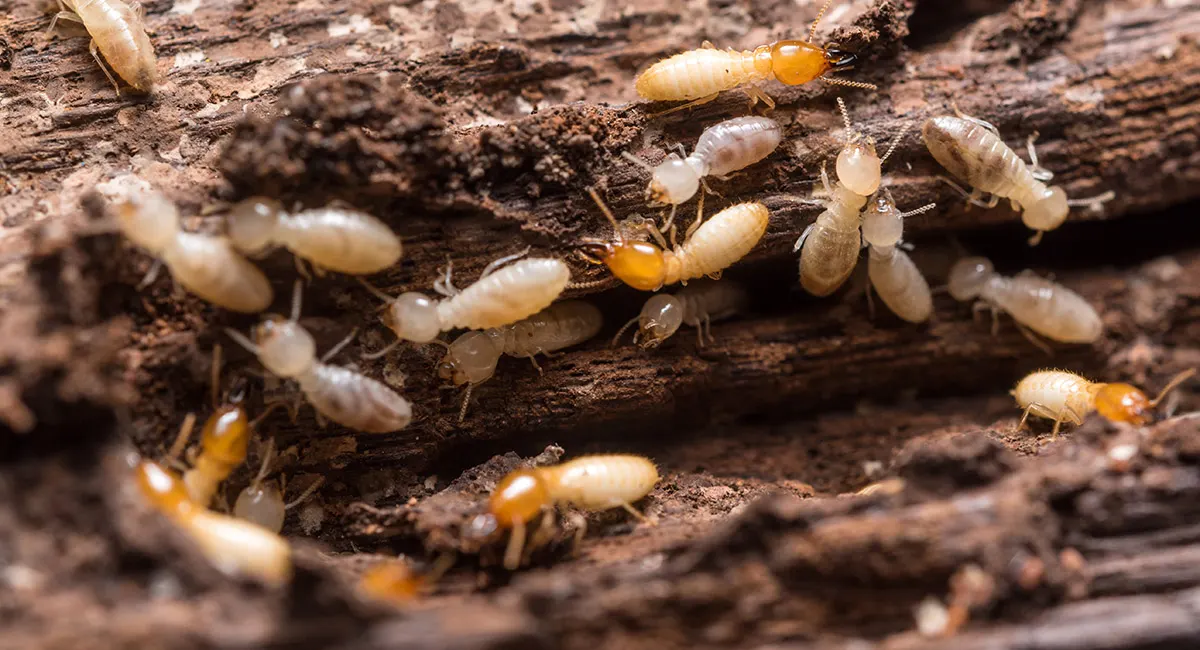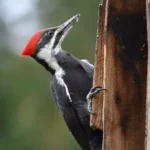Get ready for a wild ride into the secretive world of termites! We’re digging into their fascinating social lives, mind-blowing superpowers, and the hidden ways they help our planet. From epic battles to mind-boggling numbers, we’re revealing the truth about these tiny insects. Dive in and prepare to be amazed by the unbelievable world of termites!
Fun Facts About Termites
You know those tiny insects that sometimes get into our homes and cause a bit of trouble? Well, they’re actually pretty incredible creatures when you get to know them! Let’s dive into some fun facts about termites that might just change your perspective:
Termites: Nature’s Recycling Crew
Think of termites as nature’s very own recycling squad. They’re experts at breaking down dead trees, fallen leaves, and other plant material that nobody else really wants. This might sound a bit gross, but it’s super important for our environment! By breaking down all that stuff, termites release nutrients back into the soil, which helps new plants grow. They’re like tiny gardeners, constantly working behind the scenes to keep our ecosystem healthy!
Tougher Than They Look
Don’t let their size fool you, termites are incredibly tough. They’ve adapted to live in all sorts of environments, from scorching deserts to humid rainforests. They can even survive floods and droughts that would send other insects running for cover. How do they do it? Well, they’ve got some pretty amazing survival strategies, like building clever nests that regulate temperature and moisture.
Tiny Architects with Big Skills
If you’ve ever seen a termite mound, you know these little guys are incredible builders. Some mounds can reach heights of over 30 feet! They’re like miniature skyscrapers, carefully constructed with intricate tunnels, chambers, and ventilation shafts. These mounds are built to withstand the elements and protect the colony inside.
All for One and One for All
Termites are social butterflies, but not in the way you might think. They live in highly organized colonies, kind of like a big family with everyone working together. Each termite has a specific job: workers build and maintain the nest, soldiers defend the colony, and the queen’s main responsibility is laying eggs to ensure the colony’s future. It’s a real team effort!
A Gut Feeling for Teamwork
Here’s something really wild: termites can’t actually digest wood on their own! They have tiny microorganisms living in their guts that help them break down the tough cellulose in plants. It’s a win-win situation: the microorganisms get a cozy place to live, and the termites get the nutrients they need.
Fungus Farmers Extraordinaire
Some species of termites take their farming game to the next level. They actually cultivate fungus gardens inside their nests! They carefully tend to these gardens, providing them with chewed-up wood and other nutrients. In return, the fungi produce a nutritious food source for the colony. Who knew termites could be such skilled farmers?
Inspiration for a Greener Future
Scientists are always looking to nature for inspiration, and termites are no exception! Their incredible building skills and sustainable practices have sparked some fascinating research. Experts are studying termite mounds to learn how we might design buildings that are more energy-efficient and eco-friendly. Who knows, maybe one day we’ll all be living in termite-inspired homes!
What are 2 facts about termites?
Termites, those tiny architects that seem to be everywhere, have been around for a mind-blowing 250 million years. To put it into perspective, scientists believe termites have been around for even longer than the dinosaurs! And if that wasn’t impressive enough, the sheer number of termites on our planet is mind-boggling. While we may think humans rule the world, in terms of population, termites outnumber us by a landslide. It’s estimated that their combined weight is greater than all the land animals combined!
We often think of termites as pesky creatures that destroy our homes, but they actually play a really important role in our ecosystem. These busy insects are nature’s recyclers, breaking down dead trees and plants. This may sound gross, but it’s actually super important because it helps return essential nutrients back into the soil, which in turn helps new plants grow. So, while we may not always appreciate their presence in our homes, we have to give them credit for the role they play in keeping our planet healthy.
What is unique about a termite?
What makes termites so unique? Let’s take a look:
- Ancient lineage: They’ve been around for more than 250 million years!
- Diversity: We know of over 2,800 different species.
- Social Structure: They have highly organized colonies with specialized roles for each member.
- Ecological Role: They are crucial decomposers, playing a vital role in nutrient recycling.
Scientists are still learning about these fascinating creatures, and who knows what other secrets they might uncover!
What special abilities do termites have?
Termites are capable of some incredible feats. Here are just a few of their special abilities:
- They’re like tiny architects! Termites are crazy good builders, creating intricate tunnels and chambers inside their mounds, which act as their own fortresses.
- Nature’s clean-up crew! Termites are like the recycling champs of the natural world. They munch on dead plants and wood, breaking them down into stuff that goes back into the soil, making them essential for a healthy environment.
- Talking with smells! Termites have their own way of communicating, and it’s all about smells! They release special chemicals called pheromones, which are like messages they leave for each other.
- Always hungry! Termites’ constant eating is what makes them such good recyclers, but it can also cause a lot of damage if they get into our homes.
Want to learn more?
There’s still so much to discover about these fascinating creatures! Scientists are always making new discoveries about termite behavior, communication, and their role in the environment. If you’re curious to learn more, check out books, articles, or even documentaries about termites. You might be surprised by what you find!
Do Termites Ever Sleep?
Termites are constantly on the go, like tiny construction crews working 24/7. They don’t take breaks, they don’t clock out, and there’s no such thing as a lunch break in the termite world.
Why are they always active? Termite colonies are incredibly organized. Each termite has a specific job to do, and they’re all dedicated to keeping the colony alive and thriving.
Now, this doesn’t mean termites are entirely without rest. Scientists have observed periods where termites become less active. They might slow down their movements and conserve energy. It’s tempting to call this “sleep,” but it’s not exactly the same as what you and I experience. They’re not dreaming or shutting down their systems entirely. It’s more like a “standby mode” – a chance to recharge while remaining alert to any dangers or changes in their environment.
This difference in resting behavior likely comes down to how differently our brains are wired. The human brain requires deep sleep cycles for processing information and restoring energy levels. Termite brains, however, are much simpler. They don’t have the same need for deep sleep that we do.
What state has no termites?
Alaska stands out as a safe haven from these wood-munching critters! Alaska is basically one giant freezer. Those bone-chilling temperatures that the Last Frontier is famous for are a big no-no for termites. These insects thrive in warm, humid climates, and Alaska’s weather is about as far from that as you can get. It’s so cold that termite colonies can’t survive, which is fantastic news for anyone living in the state.
Now, there’s a tiny little caveat to Alaska’s termite-free status. The Alaskan Panhandle, that narrow strip of land that juts out in the southeast? Well, it turns out that even the cold might not be enough to completely deter those persistent subterranean termites. Because the Panhandle is right next door to parts of Canada that do have termites, there’s a chance these sneaky insects might pop up there occasionally.
But even with that slight possibility in the Panhandle, Alaska is still the clear winner when it comes to avoiding termite troubles.
Hold Up – Aren’t Termites Just Ants?
You might be surprised to learn that termites and ants, despite their similar looks and social structures, are actually quite different. It’s easy to mix them up, but there are some key things that set them apart.
First off, they belong to different insect families. Termites are more closely related to cockroaches, while ants are in a group called Hymenoptera, which includes bees and wasps.
Their eating habits also differ. Termites are all about that wood – it’s their primary food source. Ants, on the other hand, are much less picky eaters. They’ll munch on anything from sugary snacks to other insects.
Another difference lies in their social structures. Termites have a super-organized caste system, with specific roles assigned to different groups. You’ve got your workers, your soldiers, and your reproductives, all working together like a well-oiled (or perhaps, well-chewed) machine. Ants also have social structures, but they’re a bit more flexible.
Termites: The Good Guys (Sometimes)
Speaking of surprises, did you know that most termite species are actually good for the environment? It’s true! While we often think of termites as destructive pests, they’re essential for a healthy ecosystem.
Think of them as nature’s recyclers. They break down dead trees and plants, returning valuable nutrients to the soil. This decomposition process is crucial for healthy forests and other natural habitats.
So, the next time you hear the word “termite,” remember that there’s more to these little creatures than meets the eye. They may be tiny, but they play a big role in the world around us.
Do Termites Bite?
Termite bites are super uncommon. Termites are all about that cellulose – the stuff found in wood and plants. They’ve got these strong mouthparts perfect for chewing through all that tough plant material, but biting humans? Not really their thing.
Now, this doesn’t mean termites can’t be a little pesky. While they’re busy munching on wood, they also leave behind waste and saliva. Some folks might have a bit of an allergic reaction to that stuff, kind of like a mild irritation. So, it’s best to avoid handling termite-infested wood directly.
Here’s the lowdown on termites and bites:
| Termite Behavior | Likelihood |
|---|---|
| Biting Humans | Very Unlikely |
| Causing Allergic Reactions (from waste/saliva) | Possible |
Scientists are always learning more about insects, and there’s still a lot we don’t know about termites. It’s possible they might bite under very specific circumstances, but for the average person, it’s really not something to lose sleep over.
Bottom line? If you’re worried about termites, focus on protecting your home from their wood-munching habits, not on them taking a bite out of you!
How Long Do Termites Live?
How long termites live depends on their role within the colony. The queen termite, the big boss lady of the colony, can live for a surprisingly long time, sometimes even a decade or more! That’s a whole lot of time to be laying eggs and building up a termite empire.
Then there are the worker termites, who keep the colony running smoothly. They gather food, build those impressive mounds, and take care of the young. It’s a tough job, but they manage to keep it up for several years.
The soldier termites live a life of danger. Their job is to protect the colony from threats, like ants or other termite colonies. This means their lifespan tends to be a little shorter, maybe around a year or two.
And finally, we have the reproductive termites, also known as alates. You might know them as the ones that sprout wings and swarm around looking for a mate. Their whole purpose is to create new colonies, and once they’ve done that, their job is pretty much over. So, they tend to have the shortest lifespans of all.
Understanding how long termites live and how their lifecycles work is key to figuring out the best ways to manage them, both for the sake of our homes and for the health of our environment.
Do Termites Grow Fast?
Even under less-than-ideal conditions, termites can still reproduce and expand at a remarkable pace. Some researchers suggest that a single termite queen – the egg-laying champion of the colony – can live for over a decade and lay thousands of eggs in her lifetime!
It’s this ability to reproduce and grow rapidly that makes termites both fascinating and, let’s face it, a bit of a headache if they decide to set up shop in our homes.
So, while we don’t have an exact number of days or weeks for how long it takes a termite to grow from egg to adult, it’s safe to say that the process is generally much faster than many other insects.
Want to learn more? Research on termite behavior and development is ongoing, and scientists are always making new discoveries. Keep an eye out for the latest findings—you might be surprised by what you learn!
Can termites be killed?
The good news is, yes, termites can be stopped. While they can be a real headache because of the damage they can cause to homes, getting rid of them isn’t impossible.
One thing you can try is cutting off their food supply. Make sure there’s no wood touching your house, like branches or firewood piles.
Then, think about setting up some “Keep Out” signs that termites understand. Certain natural smells, like cedarwood or peppermint oil, can deter them.
You can create a barrier by digging a trench around your house and filling it with gravel. This makes it harder for termites to reach your home.
If you’re feeling like this is a battle you can’t win alone, call in the big guns—pest control professionals. They can figure out exactly what kind of termites you have and the best plan of attack, which might involve special treatments.
Keep in mind, though, the world of termite control is always changing. New research pops up, and some experts might have slightly different approaches.
The main takeaway is, don’t panic! Termites can be managed, and with the right approach, you can send them packing and protect your home.
What are some negative facts about termites?
Here’s the deal with termites and why they can be a real pain:
- They can turn your house into a money pit (and not in a good way). Termites have a knack for munching on wood, and that can lead to major damage to your home’s structure.
- Termites are masters of disguise (and not the fun kind). They’re sneaky! Termites often work their destructive magic from the inside out, so by the time you see the evidence, the damage might already be substantial.
- They can make you itchy and sneezy (no fun at all). Okay, this one might sound weird, but some people are actually allergic to termite droppings and saliva.
- Your garden isn’t safe either. Termites can also go after living trees and plants, causing serious damage.
- They crowd out the good guys. Termites can outcompete beneficial insects for food and resources, which can throw things out of whack in your local ecosystem.
So, while termites play a role in the grand scheme of nature, they’re not exactly welcome guests in our homes or gardens. Keeping an eye out for signs of infestation and taking steps to prevent them is key to protecting your property and your health!
Discover the hidden world of pomegranates, filled with fascinating fun facts. Dive deeper into its abundant health benefits, historical significance, and surprising trivia here: fun facts about pomegranates
Explore the curious world of Tourette’s Syndrome through a lens of captivating fun facts. Unravel the enigmatic tics, fascinating causes, and inspiring stories behind this neurological condition: fun facts about tourettes
- SYBAU See You Baby Meaning: Gen Z Slang Evolves - July 1, 2025
- Unlock Your Inner Youth: Lifestyle Secrets for a Vibrant Life - July 1, 2025
- Decode SYBAU Meaning: Gen Z Slang Explained - July 1, 2025






